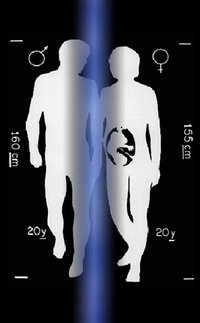

A piece of movie film has survived the forthcoming Ice Age and is discovered by Venusian scientists--5000 years from now... This work is a correspondence of two information fragments of different origins and times that met by accident. Cinema transforms into a three-dimensional landscape--utilizing data that is based on an archaeological misinterpretation. Zuse Strip is named after Konrad Zuse’s first digital computer. It used discarded 35mm movie film from the German UFA as a medium to read and write 8-bit binary code data with a hole-punch system. The work was inspired by Lev Manovich's text “Cinema by Numbers”, as well as “The Deciphering of Linear B" by linguist/archaeologist John Chadwick.

